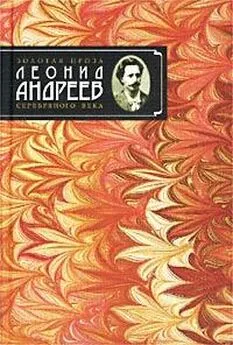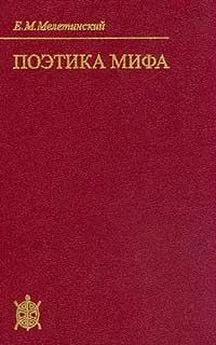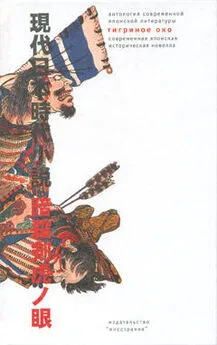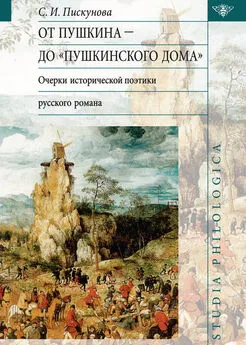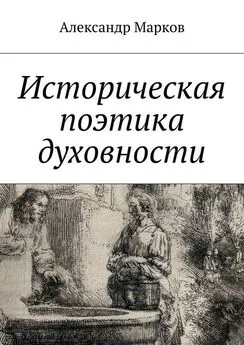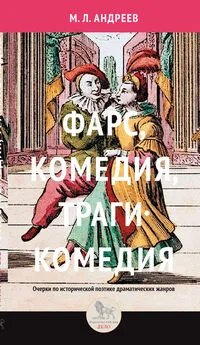Елеазар Мелетинский - Историческая поэтика новеллы
- Название:Историческая поэтика новеллы
- Автор:
- Жанр:
- Издательство:неизвестно
- Год:неизвестен
- ISBN:нет данных
- Рейтинг:
- Избранное:Добавить в избранное
-
Отзывы:
-
Ваша оценка:
Елеазар Мелетинский - Историческая поэтика новеллы краткое содержание
Историческая поэтика новеллы - читать онлайн бесплатно полную версию (весь текст целиком)
Интервал:
Закладка:
Novella is distinguished from novel and story by its brevity, and from short story and story by more complex structure. The brevity of novella intensifies the degree of concentration and symbolism used in it. Novella cannot incorporate a comprehensive “model of the world”, and thus there is a tendency to combine novellas in a single frame within which they complement each other.
There are two groups of folkloric pre-novellas — short narratives constituting realistic tales and anecdotes. On the one hand, there is interaction between these groups, and on the other, there is a relationship of complementarity between them. Shrewdness and wisdom of a hero in a realistic tale and shrewdness and trickstery of a hero in an anecdotic tale form alternatives. The same is true of realistic tales about cruel robbers and of anecdotic tales about cheerful and crafty thieves who arouse admiration or realistic tales about chaste and virtuous wives and anecdotic tales about adulterous, stubborn and wicked wives. The same system of oppositions is characteristic of folklore tradition and as concerns book tradition it is less prominent.
With reservation, realistic tale may be considered a product of transformation of subjects and structure of fairy tale. Magical elements are replaced by mundane elements, and, functionally, a magician is replaced by a witty hero or his lucky fate. If a magician is retained, he is acting as a clever counsellor. However, the main instrument here is intelligence, shrewdness, and dexterity of the hero. In a realistic tale, the intelligence of a hero is always stressed and folly of his opponents is not and this feature distinguishes it from anecdote.
A magical (often “bestial”) wife, dressed in male clothes, becomes an active assistant. Magical opponents, like dragon flies or wizards appear as forest thieves or wicked old women. Ritual trials in a fairy tale in the final analysis are transformed into extraordinary adventures.
With the elimination of fantastic element opposition, typical of a tale, between the first trial (to acquire a magical assistant) and the main trial dissappears. The successive elements of metaplot of a fairy tale are replaced by separate parallel plots which originate from these isolated syntagmatic elements.
The anecdotic folk tales are rigidly built around the axis of wit-folly. Metaplot: a fool or a simpleton falls victim of a shrewd man or trickster. Fools violate basic rules of logic because of their ignorance or because they are deceived by tricksters. Some of the anecdotes constitute the narrativization of paroemias.
The formation of book novella in the West proceeds in two ways: via exampla or via fabliaux and schwanke which are close to folklore (cf. Chinese huaben, or individual tales from "The Arabian Nights").
The conversion of the early medieval novella into a classic Western novella typical of the Renaissance concludes the synthesis of oral and book traditions. Bookishness now is manifested by rhetoric methods rather than verses (as is in the fabliau or Choser’s works). High and low sources of genre are also synthesized, and the level of hierarchy of novella in the system of genres is elevated. Novella loses its didacticism (a didactic exempla becomes ‘news’, a surprising event), fatalism, class features of a hero, fixed situations, and the hero is now able to act increasingly as an individual. The actions of a hero cease to be the function of a situation. They become interiorized, and are linked with individual features of characters (though there is no depiction of characters in a true sense of the word). Novella acquires, to a certain extent, the character of drama.
"Decameron" by Bocaccio is a typical specimen of novella of the Renaissance. Other novellists of the Renaissance deviate to anecdote and buffoonery (at routine level it relates to Sacchetti and at philosophical level to Des Periers), to more sombre attitude to human nature (Masuccio), to showing the play of fatal passions (Bandello) or studying tragic passion (Margareth of Navarre), to theatric rhetorics (Cintio), or to aesthetic formalization (Firenzuola).
In the 17th century Europe novella was romanicized. This process correlated the evolvement of novel of a new type. Novella then was directly opposed to earlier medieval, gallant romance and, sometimes, was mixed with psychological small romance.
The precursor of the romantic novella Cervantes, may be considered a progenitor of romantic novella. His "Edifying Novels" resemble consize novels or fragments of a novel. They are contiguous to psychologism and real life, to adventurous sentimentalism and picaresque themes, to the Renaissance and Baroque. In France, the evolution of prevalent Baroque ‘Spanish line’ was attended by the development of psychological line which was close to classicism and stretching from Margareth of Navarre via Villedieu to Mme La Fayette and Robert Challe.
Romanticism was the most important stage in the history of novella after the Renaissance. At that stage the deformation of this genre was to a certain extent continued (by introducing elements of magic, two worlds, lyricism and development of characters) and likely enriched, for gravitation to extraordinary, and magical things (in depicting characters, emotional state and miracles), in
herent in romanticism, at the same time complies with specific features of this genre. The action in a romantic novella can simultaneously be external and internal, and can have several layers and dimensions. Romantic novella was usually composed of two parts.
Romantic novella is traced to Goethe who did not entirely break off with classicism, but especially so to Kleist, who retained and enriched the genre of novella by combining the unusual and usual as a rule avoiding direct fantasy. Such writers of romanticism as Tick, Eiechendorf, Brentano, Hoffmann usually combined novella and tale. For the Jena romantics, it was the tradition of a tale in general; for the Heidelberg romantics it was concrete folklore traditions, for Hoffmann it was original creation of myths and tales, a combination of ideal-fantastic and real-prosaic things. Hoffmann’s line was developed by Edgar Poe whose works combined psychological, logical and ‘science’ fiction. Other American romantics (Irving, Hawthorne) basically relied on the early stories about America’s settlement and were inclined to moral allegories. In French romanticism fantastic novella prevailed (Nodier, Nerval, Gautier), with emphasis on night dreams, and with a strong lyrico-elegiac string.
Novella was retaining the romantic features for a long time not only in works of writers of transitional period such as Merimee, but also in the works of writers of classical realism such as Stendhal, Balzac, Pushkin, Gogol, Turgenev. At the transitional stage, fantasy in novella was partially replaced by descriptions of exotic customs (Merimee), professional exotics (Harte’s gold hunters), regional peculiarities (Keller, Storm, Auerbach) and remarkable historical persons (Meyer). Novella was confronted by the realistic essay and short story. A new turn in the history of novella as a genre occurred in the epoch of late realism, when realism finally got rid of the vestiges of romanticism. The novella of the late 19th and early 20th century (Maupassant, Chekhov, O’Henry) is positively distinguished from novel and story and becomes much more distinctive as a genre by making use of the principles of anecdote and abandoning traditional novellistic motifs. In Maupassant, the unheard of events come from mundane prose. Chekhov scales down the novellistic event and shifts the emphasis from the text to its internal implications. The novellists at the end of the 19th century usually reveal a tendency toward impressionism.
Содержание
Вступление 3
Ранние формы новеллы. 8
1. Новеллистическая сказка и сказка-анекдот как фольклорные жанры. 8
2. Восточная новелла 29
3. Средневековая новеллистическая традиция на Западе 50
Классическая новелла эпохи Возрождения. 75
1. Формирование классической формы новеллы («Декамерон») 75
2. Новелла Возрождения после Боккаччо 99
Романическая новелла XVII—XVIII вв. 136
Романтическая новелла XIX в. 161
От романтизма к реализму (XIX в.) 202
Заключение 245
Библиография 260
Указатель 264
Summary 272
Мелетинский Е. М.
М47 Историческая поэтика новеллы.— М.: Наука.
Главная редакция восточной литературы, 1990.— 275 с.
ISBN 5-02-016745-2
В книге на материале всемирной литературы рассматриваются вопросы происхождения жанровой структуры, формирования классических форм новеллы и ее дальнейших судеб на Западе и на Востоке вплоть до начала XX в. Основные разделы: ранние формы новеллы (новеллистическая сказка и анекдот, восточная новелла, средневековая, европейская новеллы), классическая новелла Ренессанса, романическая новелла XVII—XVIII вв., романтическая новелла XIX в., реалистическая новелла XIX в.
ББК 83.3(0) М47
Обязательный экземпляр
Ответственный редактор академик Ю. Б. ВИППЕР
Рецензенты В. Е. ХАЛИЗЕВ. Н. К. ГЕЙ
Утверждено к печати Институтом мировой литературы им. А. М. Горького АН СССР
4603000000-013
М-------------------- 106-90 ББК 83.3(0)
013(02)-90
ISBN 5-02-016745 -2 © Главная редакция восточной литературы издательства «Наука», 1990
Мелетинский Елеазар Моисеевич
ИСТОРИЧЕСКАЯ ПОЭТИКА НОВЕЛЛЫ
Редактор Е. С. Новик Младший редактор М. И. Новицкая Художник Н. П. Л ар с кий Художественный редактор Э. Л. Эрман Технический редактор Г. А. Никитина Корректоры В. И. Мартынюк,
П. С. Шин
ИБ № 16378
Сдано в набор 20.03.89. Подписано к печати 13.11.89. Формат 60 x 90Vie. Бумага типографская № 2. Гарнитура литературная. Печать высокая. Уел. п. л. 17,5. Уел. кр.-отт. 17,5. Уч.-изд. л. 19,7. Тираж 3000 экз. Изд. № 6783. Зак. № 214. Цена 2 р. 90 к.
Ордена Трудового Красного Знамени издательство «Наука»
Главная редакция восточной литературы 103051, Москва К-51, Цветной бульвар, 21
3-я типография издательства «Наука» 107143, Москва Б-143, Открытое шоссе, 28
Интервал:
Закладка:

